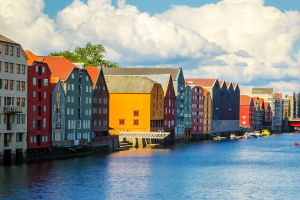Mediterranean windmills are a type of windmill characterized by their round stone towers and vertical wing panels mounted to the prevailing wind.
These windmills have a long and fascinating history and continue to be used today for the purpose of grinding grains.
In contrast, Western windmills have blades that rotate around a vertical surface.
The difference in the design of the two types of windmills is due to the climatic conditions in the regions where they are commonly found.
Mediterranean windmills are primarily found in the Mediterranean region, which experiences a more constant wind direction than in Western Europe.
The round tower design of Mediterranean windmills allows them to efficiently harness the prevailing winds, while the vertical wing panels mounted to the wind help to optimize the mill's efficiency.
The grain-grinding mechanism of the Mediterranean windmill consists of a series of gears that transfer the rotational energy of the windmill to the millstone. The result is the production of flour, which is then used for baking bread and other food items.
The windmill's importance to the Mediterranean region cannot be overstated.
Throughout history, windmills have played a critical role in enabling people to produce food and goods in a sustainable manner.
The windmill's ability to operate independently of other power sources such as water or animals made it an invaluable tool in times of need.
Even today, Mediterranean windmills continue to be used in some rural areas to grind grains for personal use.
In contrast to Mediterranean windmills, Western windmills are commonly found in regions with more variable wind patterns, such as Western Europe.
To overcome this challenge, Western windmills have an additional mechanism that enables them to turn their blades in the direction of the incoming wind.
This mechanism called the "tail," consists of a vane that is mounted at the back of the windmill.
The vane rotates the windmill to face the wind, allowing the blades to efficiently harness the wind's power.
Despite their differences, both types of windmills have had a significant impact on human history.
Windmills have been used for centuries to grind grains, pump water, and generate electricity.
They have played a critical role in agriculture and industry, allowing people to produce goods in a sustainable manner.
As a source of renewable energy, windmills are also an important tool in the fight against climate change.
Today, wind energy is one of the fastest-growing renewable energy sources, with wind turbines now being used to generate electricity on a large scale.
Mediterranean windmills are a unique type of windmill that has been used for centuries in the Mediterranean region.
Their round tower design and vertical wing panels make them particularly efficient at harnessing the wind's power for the purpose of grinding grains.
In contrast, Western windmills have a different design that allows them to adapt to more variable wind patterns.
Both types of windmills have played a critical role in enabling human progress and sustainability, and their importance will only continue to grow as the world seeks to transition to more sustainable forms of energy.


